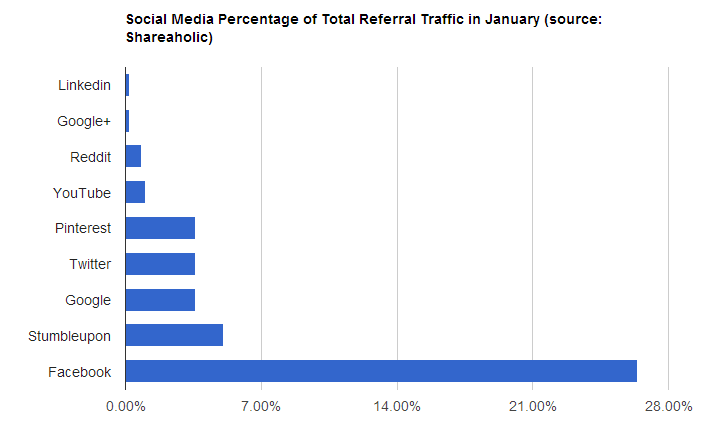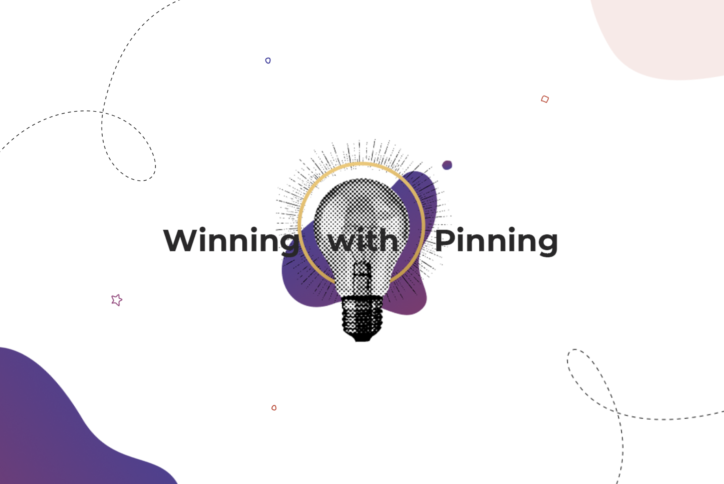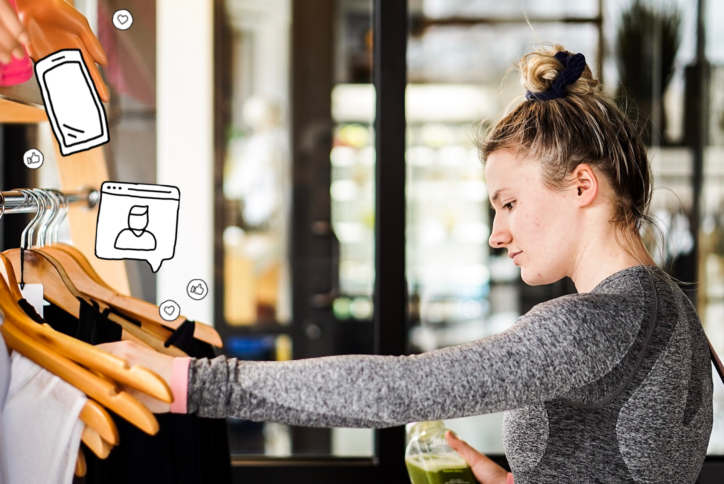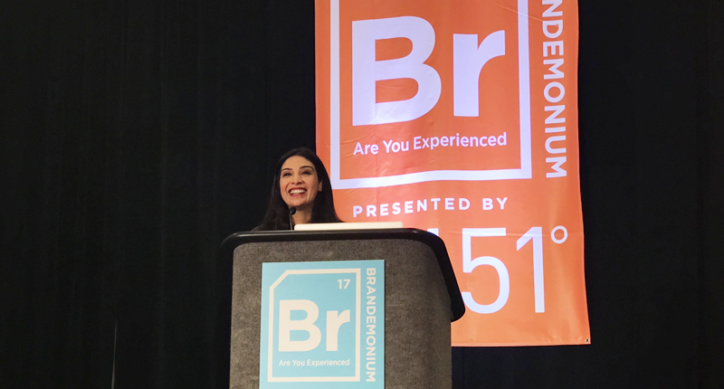On Feb. 7, Mashable ran a piece entitled “How Pinterest Changed Website Design Forever.” Bold prediction, Mashable! This may have been the most euphoric bit of Pinterest coverage I’ve seen, but it had plenty of company: the fast-growing social media service has garnered enthusiastic notices from the New York Times, the Washington Post, NPR, CNN, and Forbes, among others. Pinterest mania is gripping the news media.
There are good reasons for all this coverage, though. Last year Pinterest became the fastest independent site ever to reach 10M unique monthly visitors. It has a new and attractive design. And, as was widely reported, Pinterest is punching above its weight in terms of referral traffic with a 3.6% share, accounting for more than Google+, YouTube, and Linkedin combined:
Despite these positive signs, I don’t believe Pinterest is going to become the next Facebook or Twitter. Here’s why:
- The growth figures are overstated
There’s an interesting trend in the coverage of Pinterest’s rapid growth: none of the press is coming from Cold Brew Labs (the creators of Pinterest) itself. All of the data about its rapid ascent in the social media world is coming from third party services like comScore, data which is then intepreted in a variety of ways by the news media. Here’s a great example: take a look at this TechCrunch story I linked above, published in February 2012. The article has a graph showing Pinterest’s rapid increase in monthly uniques from May 2011 to Jan 2012, but the author doesn’t make an explicit claim as to the total length of time it took Pinterest to reach 10M monthly uniques. This story was picked up the same day by other sites like Business Insider, which reported that Pinterest “has passed 10 million users after only 9 months.”
.
If that were true, it would be an unheard-of rate of growth for the site. Unfortunately, it’s simply not the case. As of January 2012, Pinterest had been around for 22 months, not 9; it’s been in beta since March 2010. That means that some outlets are presenting a wildly inaccurate picture of the site’s growth. Allow me to illustrate:
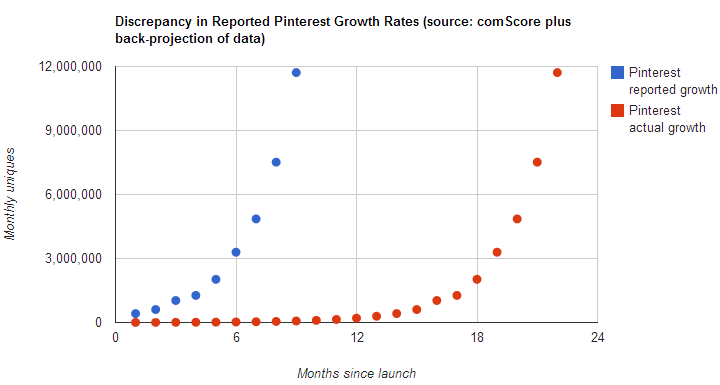
For the last 9 months, Pinterest has been growing in terms of unique visitors at a rate of about 50% each month so that in January 2012, 22 months after launch, it had 11.7M uniques. By comparison, Facebook had about 12 million users 22 months after launch (December 2006) – users who had to go through an account creation process and connect with friends to get any use out of the site. Remember also that in December 2006, Facebook had only been open to everyone for three months, which suppressed its growth rate. On the other hand, Pinterest may still be invitation-only, but anyone with a web connection can make use of the site. So, Pinterest is certainly growing fast, but it’s not on the order of Facebook. And one of the factors likely limiting its growth is…
- It’s overwhelmingly female
According to comScore, Pinterest’s users are 68% female. If you listen to AppData, 97% of Facebook users who “like” a pin are women. Google Ad Planner says that 82% of visitors are female. And if you spend any time on the home page of the site in the “everything” view, it becomes clear that whatever the breakdown of the user base may be, men are a tiny minority of “pinners.”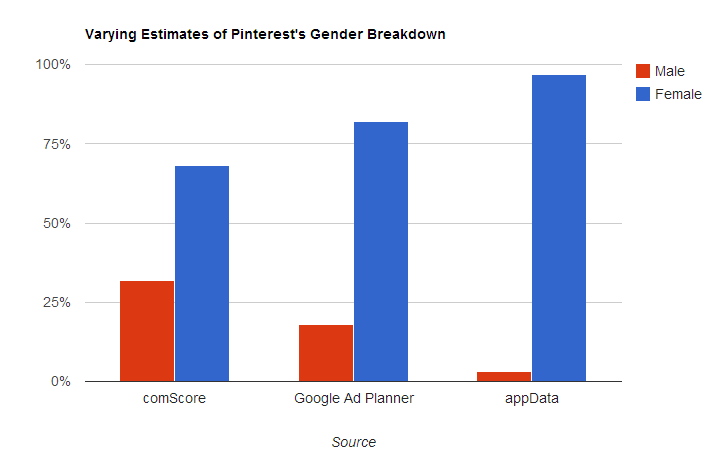 NPR suggested that this is because the interface has a feminine feel. over at TheNextWeb, Brad McCarty speculated that it’s because women like to shop more than men, and Pinterest is largely a collection of stuff you can buy. Whatever the reason, there’s never been a hugely successful social network with such a lopsided gender ratio:
NPR suggested that this is because the interface has a feminine feel. over at TheNextWeb, Brad McCarty speculated that it’s because women like to shop more than men, and Pinterest is largely a collection of stuff you can buy. Whatever the reason, there’s never been a hugely successful social network with such a lopsided gender ratio: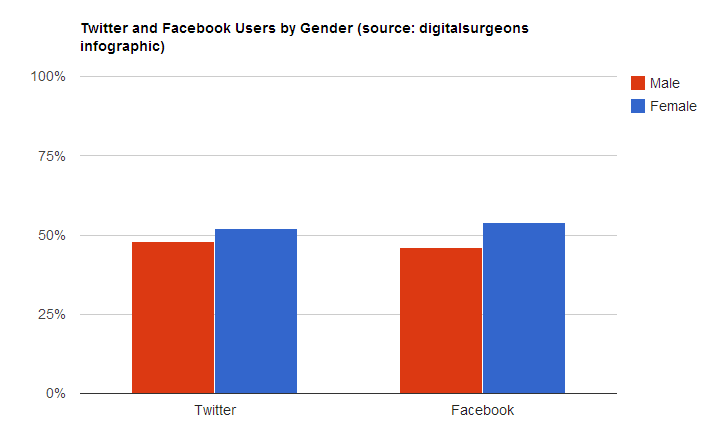 That doesn’t mean it can’t happen, of course – there’s no data about the future – but it should give one pause. And that’s far from being the only issue with Pinterest, because…
That doesn’t mean it can’t happen, of course – there’s no data about the future – but it should give one pause. And that’s far from being the only issue with Pinterest, because…
- It’s vulnerable to copying
Unlike Facebook or Google, Pinterest doesn’t have a deep feature set or any technical “secret sauce” to create barriers to entry in its space. As a result, copycats are springing up like weeds. Now, this in and of itself doesn’t mean that Pinterest can’t be a success. After all, Twitter had several clones back in the day, and they’re all gone now (for the record, Pownce, Yappd, and Jaiku).
.
Pinterest’s case is rather different, however. One of the key differences is that while Twitter has a very loose structure, organized by only @users and #hashtags, Pinterest is cleanly divided into “interests.” If you’ve spent any time on the site, you’ll notice that some interests are seriously under-served: hence the rise of niche copycat sites like Gentlemint. There’s nothing to stop the fragmentation of Pinterest’s user base into a number of sites along interest lines, nor is there anything to prevent existing sites from adopting a Pinterest-style layout. But don’t take my word for it: Flickr is already doing it. And one thing that would keep users from migrating – strong relationships – doesn’t exist, because……
… - It’s not particularly social
Pinterest has no facility for getting in touch with another user aside from commenting on a pin – even the earliest incarnations of Facebook and Twitter had messaging features! The closest you can come to a dialogue is a series of back and forth messages on a pin. You’ll get a notification by email when someone comments on one of your pins. That’s it. Attribution is a challenge, too: If my friend Michael repins one of my pins, and then his friend repins his repin, there will be no easy way to tie it back to me. Here’s an illustration of this dynamic in action; keep an eye on the “Originally Pinned By” section:
 More to the point, when users repin one of your pins they are free to change the caption text, so the only things they must take from your pin are the photo and link. So even repinning, the core dynamic of Pinterest, isn’t really social!It gets worse than that. Pinterest lacks not only the basic messaging features that are common to other social networks (Messenger on Facebook, Direct Message on Twitter) but it also lacks a community inclined to socialize beyond liking and repinning. Unfortunately, Cold Brew Labs doesn’t release user behavior stats, so we have to rely on anecdotal data to get a sense of what features are popular. I took a sampling of the first 103 pins from the everything view that had been posted for at least five minutes, and found this distribution:
More to the point, when users repin one of your pins they are free to change the caption text, so the only things they must take from your pin are the photo and link. So even repinning, the core dynamic of Pinterest, isn’t really social!It gets worse than that. Pinterest lacks not only the basic messaging features that are common to other social networks (Messenger on Facebook, Direct Message on Twitter) but it also lacks a community inclined to socialize beyond liking and repinning. Unfortunately, Cold Brew Labs doesn’t release user behavior stats, so we have to rely on anecdotal data to get a sense of what features are popular. I took a sampling of the first 103 pins from the everything view that had been posted for at least five minutes, and found this distribution: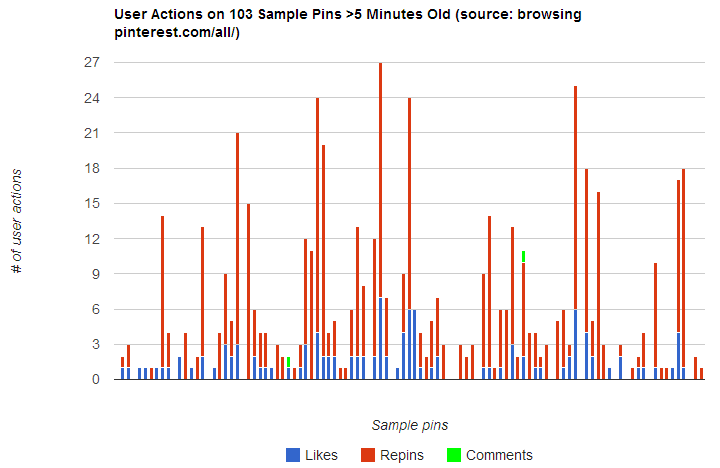 Note the paucity of green in that chart; of the 103 pins I surveyed, only two of them had comments. Pinterest simply doesn’t seem to be a site where much conversation is happening. This shallow level of socialization may be an indicator that….
Note the paucity of green in that chart; of the 103 pins I surveyed, only two of them had comments. Pinterest simply doesn’t seem to be a site where much conversation is happening. This shallow level of socialization may be an indicator that….
. - It’s not “sticky”
Pinterest gives its users little incentive to invest time in the service; a new “pinner” is just as integrated and important as a long-time user. Sure, a long-time user will have more followers, but the low level of socialization on the service means it’s unlikely that a user will build new relationships using Pinterest, so any real relationships a user has will likely be imported from Facebook. On top of that, content is not fully attributed, so users are incapable of accumulating reputation or points. The only thing tying Pinterest users to the service, then, is their pins.
.
To me, this indicates that Pinterest has failed to learn one of the great lessons of Facebook’s success: to keep your users, make your service “sticky.” Facebook made it impossible to export your social network to another service when they opted out of the OpenSocial web standard. Given that, users can’t just leave Facebook outright, because they do not have all their friends or their interaction history waiting for them on another site. Those personal connections make Facebook sticky.
.
It’s this stickiness on Facebook’s side that has led to Pinterest’s reliance on users connecting the service with their Facebook and Twitter accounts in order to bring their personal connections to the site. It’s great for adding fleshed-out user accounts quickly, but this ease of connection cuts both ways: it will be just as easy for users to leave and take their Facebook and Twitter connections to the next competitor, where they can recreate their pins and be back up and running. Meanwhile, said users’ entire pinning histories will be retained on Facebook! So, where does this leave Pinterest?
The future of Pinterest
To recap: Pinterest’s growth rate is overstated, the site is overwhelmingly female, easy to copy, and neither sticky nor social. Facebook is the service in the best position to leverage these weaknesses. It has a roughly even gender mix, a reputation for copying and improving upon its competitors, and a large devoted user base. Really, it’s an enormous devoted user base: Facebook has over 800 million users, and half of them use Facebook on a daily basis. Compare that to Pinterest’s 12 million monthly uniques.
The most important factor of all putting pressure on Facebook to assimilate Pinterest’s feature set is the gargantuan revenue potential. Pinterest has dabbled in modifying user-submitted links with its own affiliate code, collecting a small fee for purchases made after following the link. Imagine the same process, but at Facebook scale; throw in some sort of revenue-sharing arrangement for Facebook’s users, and you would have an irresistible driver of migration away from Pinterest.
None of this is to say that Pinterest is going away; as I noted in my introduction, the service has many things going for it. And Pinterest developers have been adding new features steadily, so the service is bound to change dramatically over the next couple of years. What I think is highly unlikely, however, is that it will become the next internet leviathan.

Ben Hovaness is a project manager with Sociality Squared. His opinions and good looks are his own.
Thanks to Michael Griffiths, Helen Todd, Haig Hovaness and Devin Sugameli for their invaluable suggestions and feedback.
